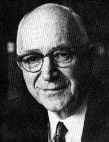|
Neet Bridge
The Neet Covered Bridge is a Burr Arch single span structure that was built by J. J. Daniels, Joseph J. Daniels in 1904 over Little Raccoon Creek southwest of Rockville, Indiana. ''Note:'' This includes Site map and Accompanying photographs. It was added to the National Register of Historic Places in 1978. History This was the last bridge contracted by Joseph J. Daniels, he was 78 at the time, though he may have been the builder of the Roseville-Coxville Covered Bridge built 6 years later that had been contracted by J.P. Van Fossen. He would have been 84 years old by this time. The 1908 Atlas of Parke County doesn't show any property near the bridge being owned by anyone in the Neet family while Enoch Shrigley referred to it as the Joe Neet Bridge. Joseph W. Neet had been born in 1862 and owned 176 acres in section 33, the bridge is on the west side of section 33. George M. Neet, born in 1869, rented 20 acres north of the bridge. Robert E. Detrich later owned property at the bri ... [...More Info...] [...Related Items...] OR: [Wikipedia] [Google] [Baidu] |
Parke County, Indiana
Parke County lies in the western part of the U.S. state of Indiana along the Wabash River. The county was formed in 1821 out of a portion of Vigo County. According to the 2010 census, the population was 17,339, an increase of 0.6% from 17,241 in 2000. The county seat is Rockville. It has a population density of about . The county contains six incorporated towns and many unincorporated communities. It is divided into 13 townships which provide local services. Two U.S. Routes and five state highways pass through or into the county, along with one major railroad line. Parke County has 31 covered bridges and describes itself as the Covered Bridge Capital of the World. It is the site for the Parke County Covered Bridge Festival which has been held in October each year. As of 2020, Parke County is included in the Terre Haute, Indiana, Metropolitan Statistical Area. History This area had been occupied for thousands of years by succeeding cultures of indigenous peoples. The firs ... [...More Info...] [...Related Items...] OR: [Wikipedia] [Google] [Baidu] |
